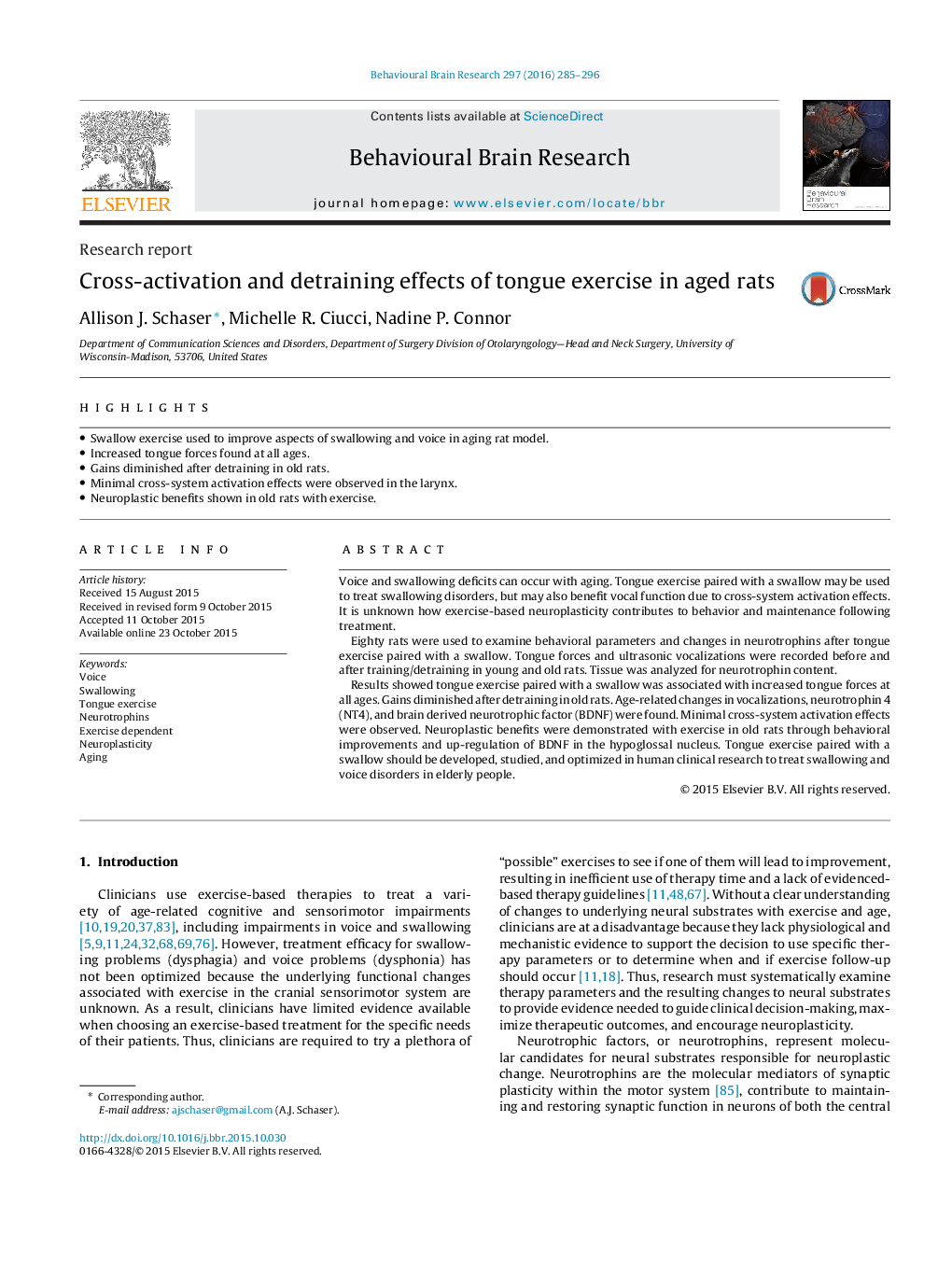| Article ID | Journal | Published Year | Pages | File Type |
|---|---|---|---|---|
| 6256417 | Behavioural Brain Research | 2016 | 12 Pages |
â¢Swallow exercise used to improve aspects of swallowing and voice in aging rat model.â¢Increased tongue forces found at all ages.â¢Gains diminished after detraining in old rats.â¢Minimal cross-system activation effects were observed in the larynx.â¢Neuroplastic benefits shown in old rats with exercise.
Voice and swallowing deficits can occur with aging. Tongue exercise paired with a swallow may be used to treat swallowing disorders, but may also benefit vocal function due to cross-system activation effects. It is unknown how exercise-based neuroplasticity contributes to behavior and maintenance following treatment.Eighty rats were used to examine behavioral parameters and changes in neurotrophins after tongue exercise paired with a swallow. Tongue forces and ultrasonic vocalizations were recorded before and after training/detraining in young and old rats. Tissue was analyzed for neurotrophin content.Results showed tongue exercise paired with a swallow was associated with increased tongue forces at all ages. Gains diminished after detraining in old rats. Age-related changes in vocalizations, neurotrophin 4 (NT4), and brain derived neurotrophic factor (BDNF) were found. Minimal cross-system activation effects were observed. Neuroplastic benefits were demonstrated with exercise in old rats through behavioral improvements and up-regulation of BDNF in the hypoglossal nucleus. Tongue exercise paired with a swallow should be developed, studied, and optimized in human clinical research to treat swallowing and voice disorders in elderly people.
